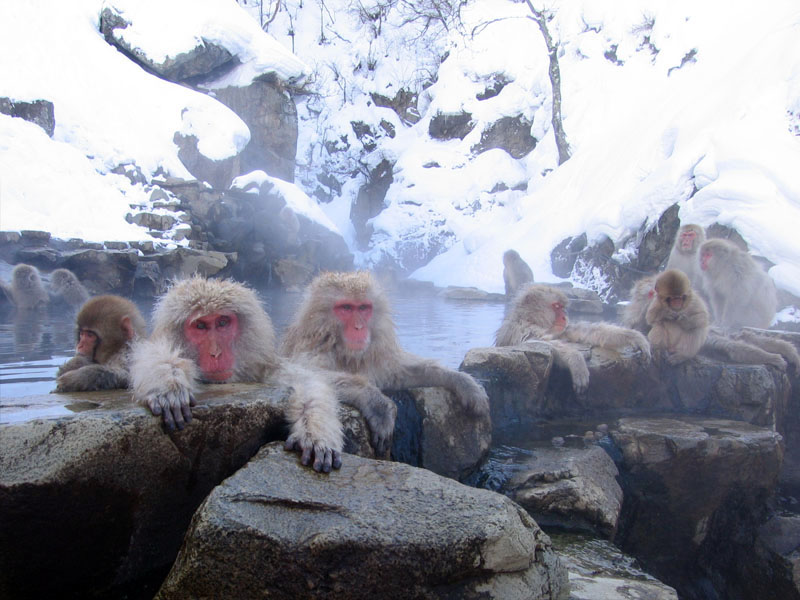About two thirds of the average American’s electric bill goes to heating and cooling. Changing temperature simply demands a great deal of energy, and American’s can be very particular about their thermostat. Unless you live in a tropical climate that is fairly constant year-round, your house is going to require some kind of climate control. Rather than wasting your money (and burning fossil fuels), go outside and look down, deep down.

Courtesy of Wikimedia
What is Geothermal?
Unlike air temperatures that fluctuate widely, ground temperatures only a few feet down stay at a fairly constant temperature around 50 degrees Fahrenheit. This means that we have access to 50 degree material all year long. Geothermal heating and cooling simple manipulates this fact. In the summertime, this means using the earth as an air conditioner. Since 50 degree air is cooler than inside temperatures, it cools the insides of our homes. In the winter, this outside source of heat is compressed to achieve much higher temperatures which can be used for heating.

Courtesy of Water Furnace
How does it work?
The home is connected to the earth via a long tube or several tubes organized in a loop or several loops containing a water-based refrigerant. These loops can either be horizontal or vertical depending on how much space is available, the type of soil, and other ground conditions. Where space is available and soil is not exceptionally rocky, horizontal systems are used. They require less excavation and are generally cheaper. There are other types, but most systems fall into these two categories or are a variation.
Cooling
The way a geothermal system cools a home is actually a fairly simple process. Think about walking into a cave in the middle of summer. Even though it may be 90 degrees outside, you hit a cool burst of air when you step inside. The same idea is used for cooling. First, the warm refrigerant from the home is pumped into the pipes. It flows into the underground pipes where the soil is a cool 50 degrees Fahrenheit. Heat from the warm fluid in the pipes is transferred into the cool soil. Once the refrigerant is cooled, it is pumped back into the house. Here, warm air is blown over the cool fluid. The air leaves the heat exchange much cooler, and the fluid is warm and ready to go back underground.
Heating
In wintertime, this process is reversed. Cold fluid goes into the earth, and warm fluid comes out. But how can you heat your house to 70 degrees when the earth is only 50 degrees? The answer lies in the properties of the fluid itself. Cold fluid is pumped underground and warmed to 50 degrees and brought back inside. The fluid then enters a compressor where it reaches much higher temperatures and evaporates. This heat is then transferred to colder air in the home. The fluid condenses at the lower temperature and then expands, which cools it down further. The process then repeats itself.
Benefits
Geothermal energy is much more energy efficient that traditional forced air heating systems. This is because geothermal does not “create” heat, but it transfers it from the earth into your home. When you spend a dollar on forced air, you get about $0.94 worth of heat. That same dollar spent on geothermal yields about $4 worth of heat due to the fact that it transfers energy rather than converts it from one type to another. This translates into energy savings that will pay off the initial cost of a geothermal system in 3-5 years.

Courtesy of I-Witness News
Electricity Production
Geothermal also has a lot of potential outside of individual homes. However, this also requires larger sources of ground heat such as hot springs. These geothermal power plants are largely located in the western part of the United States where these kinds of hot springs exist. These plants produce a significant amount of power too! In fact, they produce about a third of the energy that solar plants produce according to the Federal Energy Regulatory Commission. As this technology improves and heat transfer becomes more efficient, we may see this technology take off even more.
Future Implications
While geothermal technology has the ability to generate electricity, it will likely be used primarily for heating and cooling. Since these processes require so much energy, geothermal is best suited to this role. This technology will also become more common with newer developments. This is because it is hard to retrofit existing buildings with geothermal systems due to the required excavation work. Since new buildings require this anyway, it is much easier to install these systems from the beginning rather than adding them on later.
This is really interesting. I am actually learning about this in one of my classes. Keep up the work!